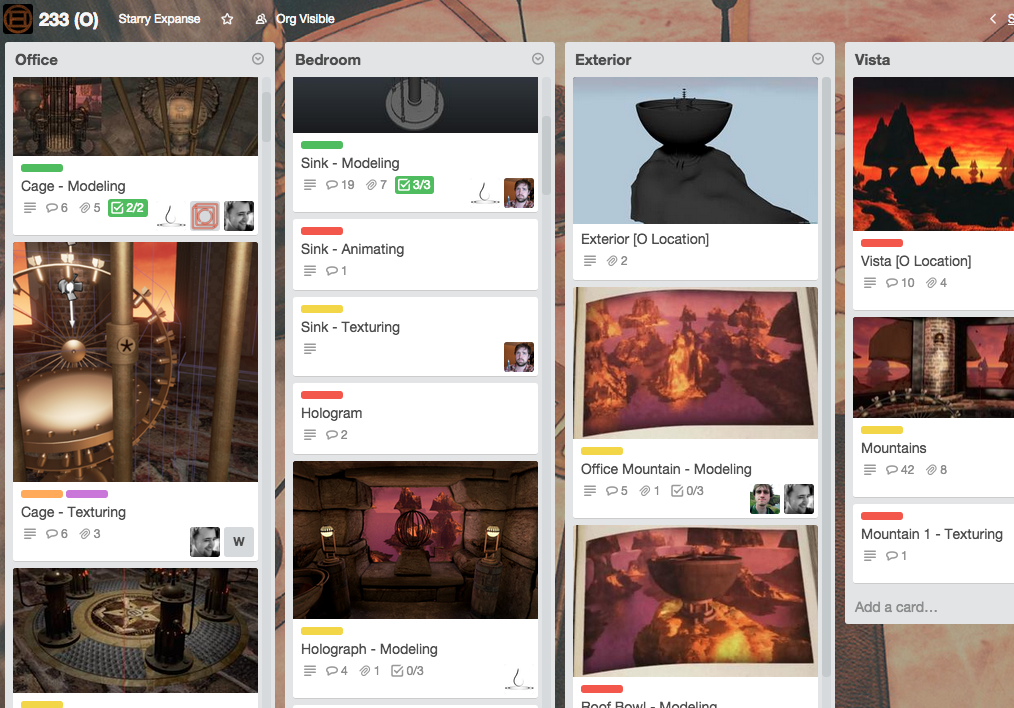Your demo of age 233 this year had me interested. I've been following the project for a couple years now
A lot of the game in riven is broken up into small chunks. E.g., each island, and each age, seems like it can be worked on as an isolated unit. Which is why you can "polish" one age, demo it, and move on to the next project.
I am wondering if you have a high-level step-by-step of how you approach the re-creation of each one of these units. For example, I imagine it goes somewhat like this:
1. build model of the land
2. triangulation work to determine the locations of objects on the land
3. build 3-d models of those objects
4. place them in the right spots
5. design and apply textures
6. add sounds/buttons/animations
I'm sure its much more complicated than that, and that there are special cases for each location. But at a high level it seems like there is some process like this that will yield a 90% complete area of Riven.
Finally, in addition to learning about your technical process, I'm curious about progress. How many such units are there in Riven, and at what step are you on each of them?
